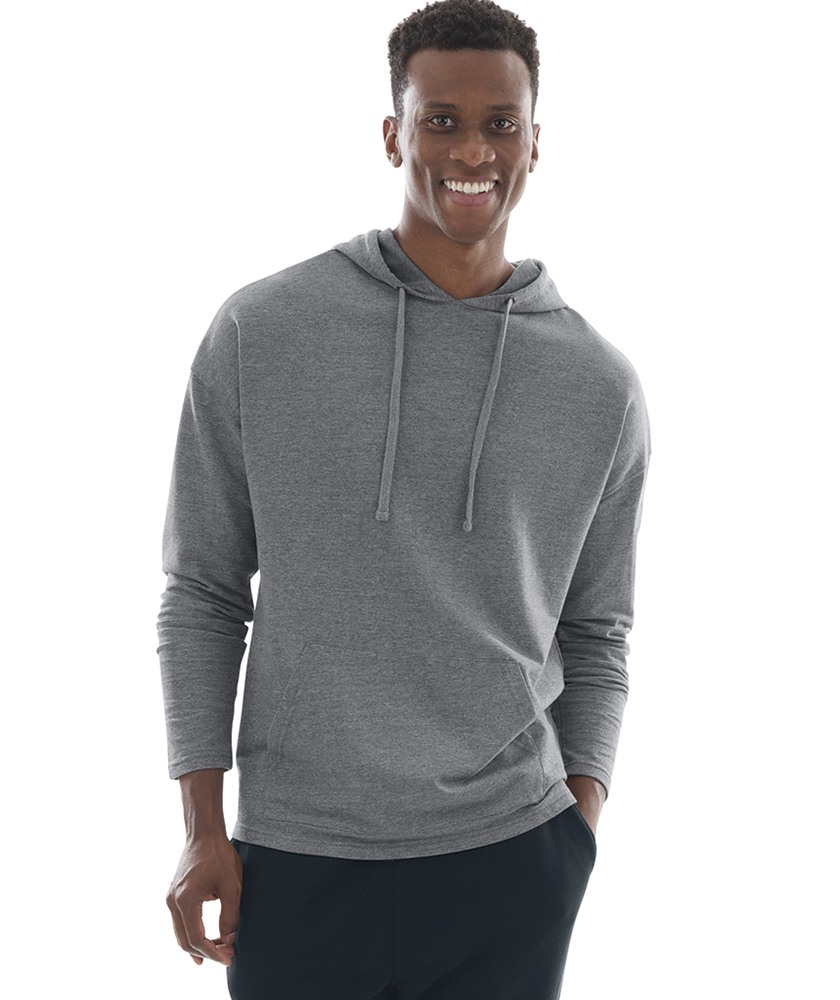In recent years, the dress code landscape has undergone a metamorphosis, moving away from rigid conventions toward more flexible interpretations of professional attire. This shift has raised intriguing debates, particularly around whether casual garments like hoodies can be incorporated into a business casual dress code. The fluid nature of fashion in the workplace prompts an exploration of how hoodies navigate the delicate balance between comfort and professionalism.
Firstly, let’s define what business casual attire typically encompasses. Traditionally, this designation includes clothing that is less formal than traditional business wear but still polished enough to convey a sense of professionalism. Collared shirts, blouses, dress pants, and skirts frequently populate the business casual wardrobe. However, the emergence of tech and creative industries has introduced a more relaxed ethos, challenging long-held beliefs about acceptable workplace attire. This begs the question: can a hoodie, usually associated with leisure and youth culture, fit into this category?
One of the inherent strengths of the hoodie is its versatility. From high-fashion brands elevating the garment to runway status to more standardized versions found in casual wear, the hoodie can vary significantly in style and fabric. A sumptuous cashmere hoodie paired with tailored trousers may evoke an entirely different impression than a simple cotton version decorated with a logo. Thus, the context becomes crucial. In an environment that prioritizes innovation and individual expression over strict formality, a well-chosen hoodie can convey creativity and approachability.
Moreover, it is essential to consider the fabric and fit when contemplating the appropriateness of a hoodie in a business casual setting. A sleek, minimalist design with a tailored fit, made from high-quality materials, can elevate the overall aesthetic. Contrast this with an oversized, graphic sweatshirt, and the distinctions become stark. Organizations that encourage a relaxed dress code should guide employees to choose options that align with the overall vibe of the workplace while ensuring they maintain a professional appearance.
Yet, it remains essential to recognize the potential misinterpretations surrounding hoodies in a business environment. Not all industries welcome a relaxed dress code, and in more traditional fields—finance, law, or corporate consulting for instance—donning a hoodie might be seen as an affront to established norms. In these cases, the penny loafers and crisp blazers still reign supreme. Adherents of conventional attire may argue that hoodies lack the professionalism requisite for client-facing roles or influential meetings, raising legitimate concerns about the implications of such choices.
Furthermore, the psychology of clothing cannot be ignored. What we wear can significantly influence our behavior and mindset. Studies have demonstrated that professional attire can bolster confidence and foster a greater sense of purpose. Some maintain that donning a hoodie might engender a more relaxed, less engaged state of mind. It raises the question of what message we want to convey in the workplace. Is it vital for individuals to present themselves in a manner that aligns with traditional expectations? Or can unique expressions of identity through clothing, such as the hoodie, foster an authentic workplace culture that embraces diversity and individuality?
Companies are increasingly recognizing that employee happiness often stems from comfort and self-expression. School shooting behind the scenes has been consistently shifting toward more casual, inclusive attitudes, which is especially prevalent in industries like technology. Firms such as Google and Facebook advocate dressing for one’s day, encouraging employees to present themselves in the manner that they feel most authentic. Even in these relaxed environments, the challenge of maintaining professionalism whilst choosing comfort remains critical. How do companies strike the delicate balance between encouraging individuality while upholding standards?
This opens the door to a potential resolution. Organizations might consider establishing guidelines for what constitutes appropriate business casual attire that includes hoodies. These guidelines could clarify acceptable styles, colors, and materials while leaving room for individual expression. By delineating clear parameters, businesses could embrace a progressive dress culture without veering into ambiguity. Kitchen table discussions surrounding dress code could serve as a platform for employees to voice their preferences while fostering a sense of inclusion.
For the day-to-day employee, developing an eye for appropriate hoodie choices can make all the difference. Accessories, footwear, and even layering can significantly impact the overall impression created by a hoodie ensemble. A carefully chosen blazer or tailored jacket can juxtapose the casual nature of the hoodie while maintaining comfort and ease. Proper footwear, such as loafers or clean sneakers, can add a refined touch, ultimately allowing the individual to navigate the complexities of business casual with confidence.
In conclusion, the debate surrounding hoodies and business casual attire encapsulates larger themes about comfort, individuality, and tradition in the workplace. As the boundaries of workplace attire continue to evolve, the hoodie stands as a testament to how style is synonymous with identity. Although acceptance may vary according to industry norms and office culture, the hoodie, in its many forms, remains a fascinating subject of conversation—a thread woven into the ever-changing tapestry of business casual dress codes.
